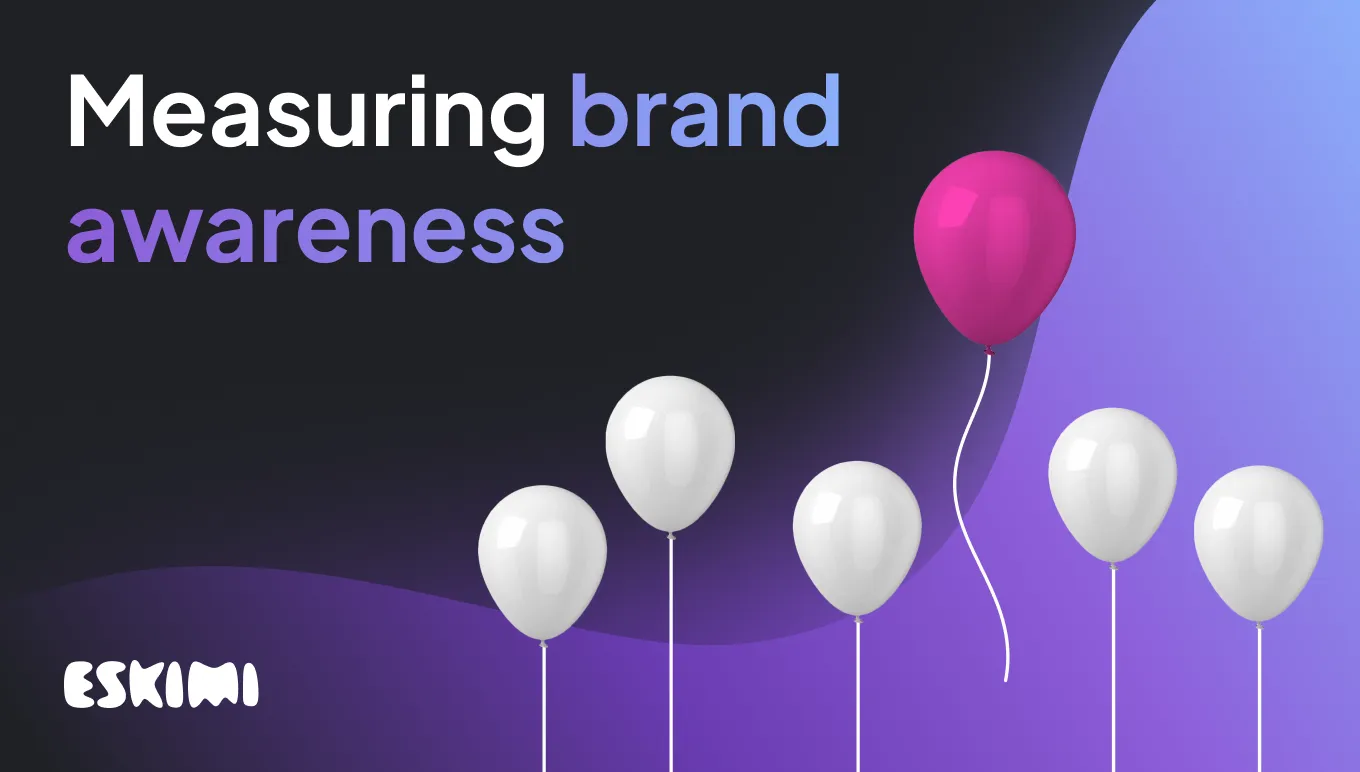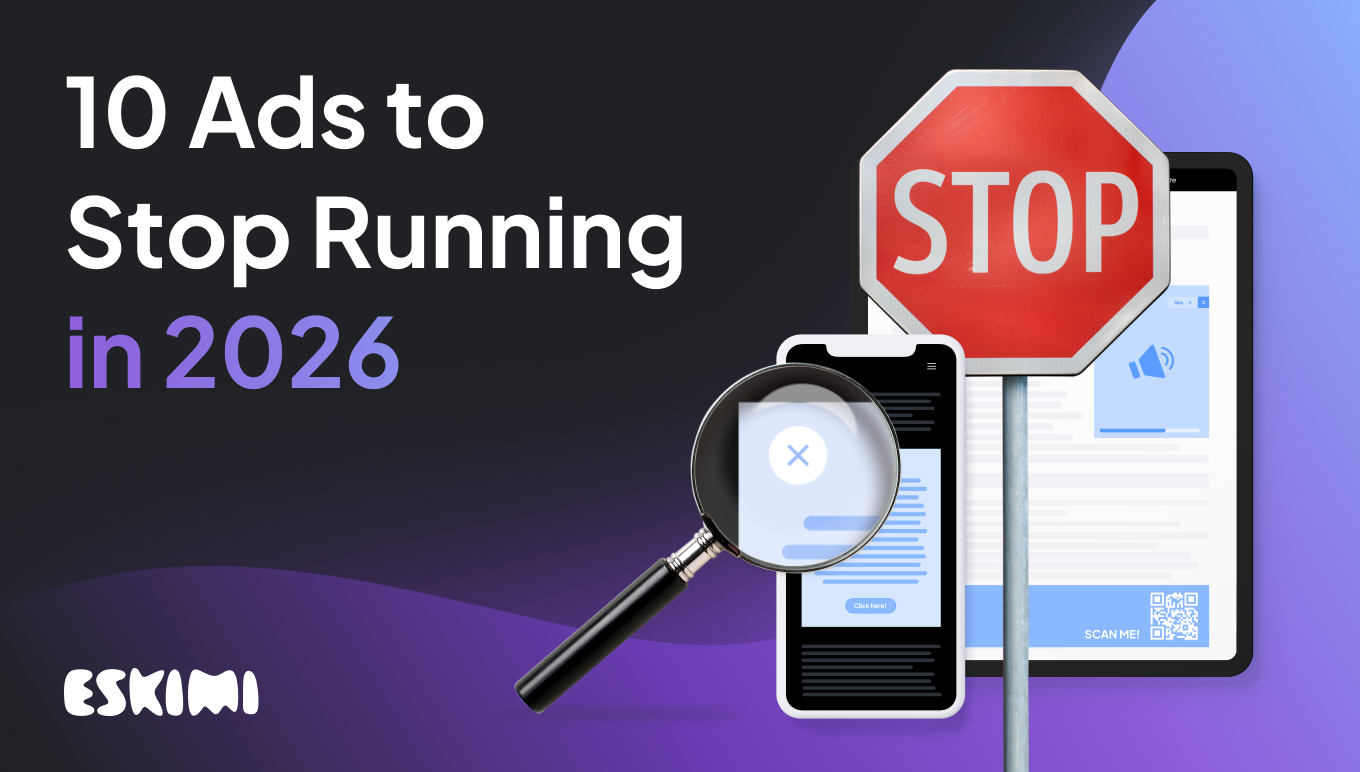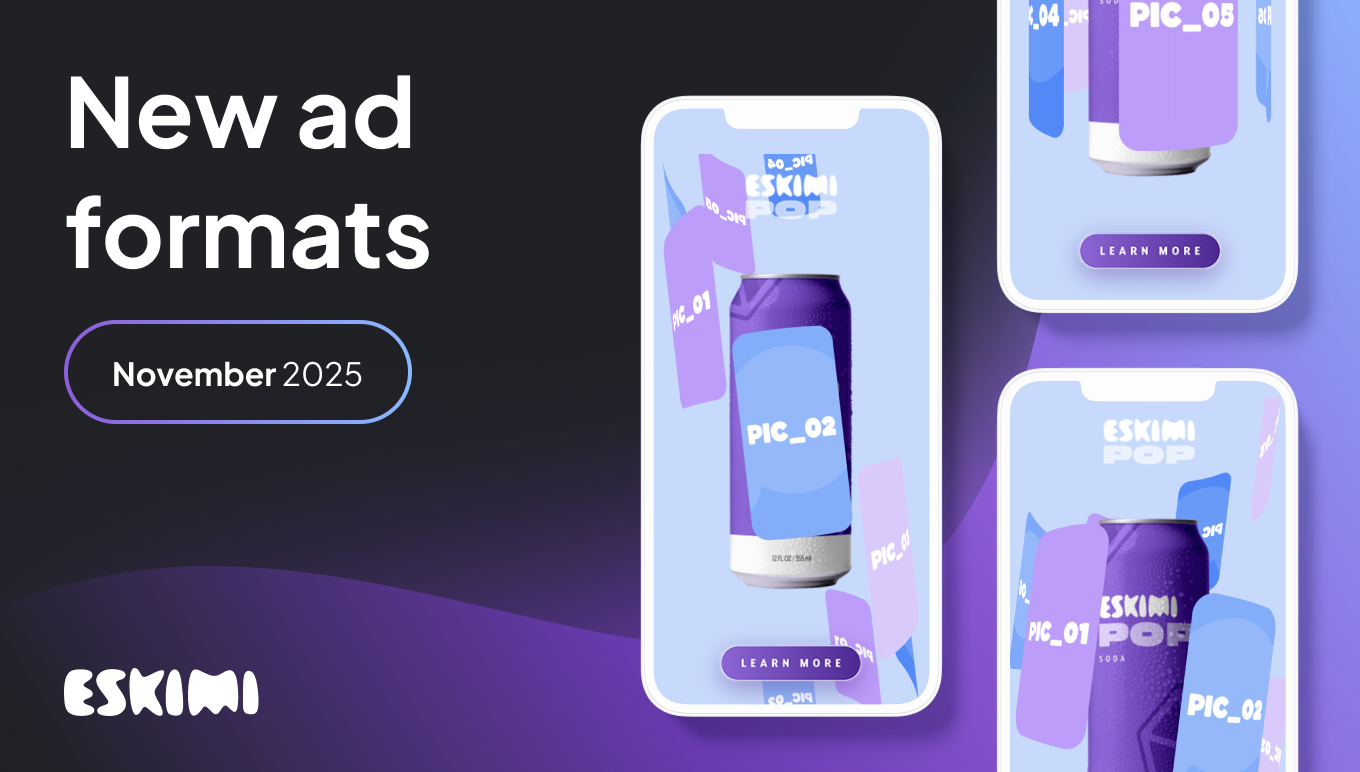How To Measure Brand Awareness: KPIs And Tactics To Follow

Have you ever spotted a golden rounded letter M and thought you wouldn’t mind grabbing a cheeseburger?
Or overheard someone saying, “just do it,” and immediately connected it with the swoosh logo?
Those are some of the best brand awareness examples from fast-food chain McDonald’s and sportswear brand Nike, although we believe this wasn’t even necessary to specify.
On the surface, brand awareness sounds simple. People know your brand exists, are aware of what you do, and, hopefully, trust you with their purchase decisions.
But how do you measure it? What can you do to boost awareness if your brand lacks it?
Let’s dig into answers.
What is brand awareness?
Brand awareness refers to whether or not (and on what level) people can recognize a particular business or brand. It is the extent to which consumers are aware of a brand’s existence (without even being customers of that business), its name, logo, tagline, and/or key messaging.
Just like in McDonald’s or Nike’s cases – you don’t have to wear the latest Air Max or eat fast food to know what these two brands are known for.

It works by building a connection between a brand and the audience, considering ideal customers, the competitive landscape, and the brand’s unique value proposition.
To build brand awareness, businesses can work on a variety of marketing activities, like consistent messaging, launching engaging marketing and PR campaigns, creating valuable content, and others that can increase the brand’s visibility and trustworthiness, therefore, positively impacting consumers’ level of familiarity with a specific brand.
Why is brand awareness important?
In short, brand awareness can significantly influence consumer behavior, for instance, a decision to purchase (or not), which is crucial for every business's growth.
Some other benefits include:
- Standing out from the competition. In a crowded marketplace, a high level of brand awareness can help a brand differentiate itself from its competitors. Meanwhile, low brand awareness can mean low visibility and cause struggles in attracting new customers and retaining existing ones.
- Better brand loyalty. Consumers who are familiar with a particular brand are more likely to choose it over its competitors, even if the competition can offer lower prices (ever tried to convince a devoted Apple to give up on it?).
- Winning the first thought. A high level of brand awareness can be one of the key reasons why consumers think of a specific brand first when they need to shop within a particular product category. It’s especially important if they’re about to make a purchase decision, and your brand just pops into their minds.
- Increased sales. Difficult to connect these two dots directly, but better brand awareness can lead to increased sales and revenue. Consumers are more likely to choose a brand they’re familiar with, which can lead to higher purchase rates and returning customers (who, by the way, tend to spend more than first-time customers).
- Easier to introduce new products. A well-known brand can leverage its reputation to generate interest in new products or services, increasing the chances of a successful product launch.
- Foundation for growth. Increasing brand awareness is an important metric that you can report as evidence of a company’s success and acquire investors who sometimes see the power of the brand as the main reason to invest.
- Attracts talent. Well-known brands that work on their visibility often attract not only more customers but also people who want to join the company and work for it.
6 tactics for measuring brand awareness
The problem with measuring brand awareness is that it is quite abstract. It’s not like you can track one particular metric, evaluate the progress, and be 100% sure that a specific activity resulted in a higher/lower brand awareness.
Although challenging, it’s important to understand how well your brand is known and recognized by consumers.
To do this, you need to combine different methods (both quantitive and qualitative) that can help you to get a better understanding of the situation. These methods can give you valuable insights into your brand awareness strategies' effectiveness and help you make better future decisions.
Below are some key ways how you can evaluate your brand awareness.
1. Brand recall
Brand recall is an essential aspect of brand awareness, indicating how well a consumer can remember and identify a brand (and/or products and services) from memory. Or in other words, it shows whether or not your brand stands out.
It works in two ways:
- Aided recall – the consumer is given a prompt or cue, such as a brand name or logo, and asked to recall a brand.
- Unaided recall – the consumer is asked to recall a brand from memory without any prompts and cues.

High brand recall is the ultimate aim of any business since being at the top of the mind whenever someone thinks of a product category can bring many benefits. Besides making a purchase, people might start telling about a brand to their friends and family (word-of-mouth marketing), which we all know can work wonders.
The best way to measure brand recall is to do a survey. It can be a standalone survey or include brand recall questions in your other brand awareness surveys (more on that later).
To learn what your brand recall percentage is, you can use a simple formula below:

The higher the number, the better your brand recall. Anything below 50 might indicate that you need to put more effort into improving your brand recall.
2. Share of voice
In the past, the share of voice (SOV) described the share of all your advertising (including print, radio, TV, etc.) compared to all of your competitors. Nowadays, it still means the same but includes many more aspects of (measurable) brand awareness, like website traffic or PPC.
In short, SOV gives you an idea of a brand’s visibility or exposure in a particular market or industry.

To measure share of voice, one of the metrics you can use is brand mentions which refers to how many times your brand is mentioned in sources like online news articles, social media posts, blog posts, etc. You can get this number in many ways, including setting up Google Alerts, using SM monitoring tools, various media monitoring services, Google Analytics, and similar.
The SOV formula may differ depending on the metrics you’re using to measure it. For instance, for social media SOV, you can use Total SM mentions for your brand / Total SM mentions for all brands in the market or industry x 100%, while for web traffic SOV you have to adjust it a bit.
Overall, you have to divide your brand’s measure by the total market measures, regardless of the channel.
With SOV, you should aim for the highest numbers. A high share of voice can indicate that a brand is making a significant impact in the market, while a low SOV may suggest that the competition is doing much better. Remember, though, that it's best to use it in conjunction with other metrics if you want to get a more realistic idea of how your brand is doing.
3. Surveys
We have already touched upon brand recall surveys, but those are just one type of many you can do to measure brand awareness.
Some other types of surveys that can you can use include:
- Brand association survey. This survey asks respondents to describe attributes or characteristics that they associate with a brand. Typically, they are shown a list of attributes and asked to rate the degree to which they associate each attribute with the brand.
- Brand recognition surveys. Respondents are given a list of options and asked to identify a brand. For instance, a survey may contain many different logos and ask respondents to identify a brand associated with each logo.
- Purchase intent survey. These surveys show how likely respondents are to buy or consider buying a particular brand in the future. You should start tracking changes in purchase intent to gain insights into the effectiveness of your branding and marketing efforts.
- Brand perception survey. This survey can help you learn how respondents perceive your brand in relation to its competitors. Typically, a survey includes various aspects of several brands, like quality, value, and innovation, and asks respondents to rate each brand based on those dimensions.
- Net Promoter Score (NPS) survey. This survey shows the level of customer loyalty and brand advocacy. It typically includes a scale of 0 to 10, where respondents are asked to choose how likely they are to recommend the brand to others.
Your choice of the type of survey should depend on your research objectives and the information you’re trying to gather. Choosing the right survey can help you understand how well your brand resonates with your customers and identify the further steps you need to take.
4. Brand lift studies
Although brand lift studies technically fall under surveys, measuring brand awareness using brand lift study deserves its separate section since it’s more focused on specific campaigns than overall branding efforts.
In short, brand lift studies can show the impact of an advertising campaign or marketing initiative on a brand’s key performance indicators (KPIs), like awareness, consideration, or others.
So it definitely plays a significant role in programmatic advertising and measuring its effectiveness.
Typically, a brand lift study is done by comparing two target audience groups – an “exposed” group (that sees the ads) and a “control” group (that is not exposed to any of the ads). The brand perception of the two groups is examined after the ad campaign via a poll. At Eskimi, for instance, we can run this poll via ad placements, and people can answer directly in banners or on the website.

Once the study is finished, you can get answers to such questions as:
- Do the customers recall the ad?
- Did the customers like your ad?
- Are the customers more aware of your brand/product after the campaign?
- Do the customers have a more favorable attitude towards your brand/product after the campaign?
- Are the customers more interested in your brand/product?
- Did the ad induce the customers to consider your brand/product?
- Are the customers more likely to purchase after seeing your ad?
So, a completed brand lift study will give you metrics for ad recall, brand awareness, interest, consideration, favorability, purchase intent, and more.
Below you can find a template for a brand lift study that you can adjust to your needs.

5. Offline methods
Offline methods for measuring brand awareness are clearly more challenging than online, but there are several different ways you can do it.
Surveys
Classic, huh?
These surveys can be conducted in person or over the phone. By asking questions about brand recognition, recall, and association, you can gather information about the level of brand awareness and get valuable insights into how well your brand resonates with customers.
Footfall
Driving people to your website is not the only use for online advertising, especially if you have a physical location too. If you want to track them, footfall is a term you need to become aware of.
Put simply, footfall is used to describe the number of customers that enter physical stores and learn how it correlates with digital marketing campaign impressions.
This technology is based on various data segments. One of the main ones is device ID which is analyzed and compared with users who have seen the ad and appeared in your physical store or location. The solution also considers real-time GPS location data, meaning that users are captured and analyzed in real-time.
Point-of-sale data
As the title suggests, point-of-sale data can provide information about transactions made at a particular point of sale, in this case, physical location. This can include products purchased, the date and time of the transaction, and the exact location where the transaction took place.
Tracking point-of-sale data can give insights into how frequently your brand is being purchased and the market share it is capturing in specific locations or geographic areas.
Sponsorship and event metrics
Depending on the event, you can track various metrics with this one. For example:
- Pre-event metrics, like numbers of tickets sold, social media engagement and impressions, email open rates, etc.
- Onsite metrics, like attendance, social media mentions, foot traffic, media coverage, etc.
- Post-event metrics, like leads generated, website traffic, social media mentions, number of conversions/sales, overall ROI, etc.
- Or, you guessed it right, conduct a survey to collect feedback.
6. Web analytics
Analyzing your website metrics can also indicate some important changes and be a valuable activity for measuring your brand awareness. This can include anything from website traffic to content performance.
For example, increased direct traffic theoretically means that more people are learning about your brand. Whether they saw an online ad before, spotted your brand name on a billboard, or noticed an influencer promoting it, you can assume it’s getting traction.
Similarly, search data can also be a valuable measurement to track. Think about it – there would be no search results if people were unaware of your brand. Therefore, higher branded search volume can indicate that more people are starting to notice your products/services.
As for social media, an increase in engagement, specifically metrics such as likes, comments, or shares, can indicate increased brand awareness.
These are a few options you can check to get a clearer image of the situation, which can help you make more data-driven decisions in the future.
Quick tips on increasing brand awareness
If you checked all the steps above and noticed that there is still room for improvement in terms of your brand awareness, here are some activities and channels that can help you do it.
Advertising
Advertising is one of the most obvious ways to boost brand awareness. You can reach more people and create a long-lasting impression by launching ad campaigns and targeting audiences on different channels (not only display anymore – but also CTV, in-game, etc.).
If you can do it, a good idea is to offer promotions or discounts that can incentivize your consumers to try your products or services (attract new customers) or buy again (retain existing ones).

Content marketing
Creating valuable content that addresses your target audience's needs and interests not only helps show your expertise in the industry but also resonates well with your ideal customers. You can create and share this content across multiple channels, including already mentioned social media, your website and/or blog, or email newsletter.
Besides better brand awareness, this can help to build trust and loyalty with your existing and potential customers.
Employee brand advocacy
Employee brand advocacy is another way to improve brand awareness; only the key focus here is your own team. It’s the practice of encouraging employees to actively (and passionately) talk about their workplace, therefore, represent it online.
It can include anything from sharing company news or their own experiences on social media to attending industry events.
This way, employees can help build a positive reputation and boost brand awareness both internally and externally.

Word-of-mouth
Word-of-mouth refers to customers spreading a positive word about your brand, whether it’s written (reviews) or verbal recommendations to family and friends. It’s actually one of the most powerful tools to influence purchase decisions, not to mention that it helps people to learn more about a brand (or hear about it for the first time).
There is no one way to encourage this, but it often comes down to the overall experience a person has with your brand. Besides a product/services that meet expectations, this can include excellent customer service, easy checkout, nice and well-thought-out packaging, fast delivery, or all combined.
Social media
Social media offers nearly limitless opportunities to connect with your audience. A huge part of your audience uses social media, and ignoring this fact is simply missing another great opportunity to increase brand awareness.
Platforms like Facebook, Twitter, or Instagram let brands engage with their target audience and increase visibility through organic and paid posts, user-generated content, or influencer marketing.
So put some thought into making your content more engaging, track the results, and use them to improve your efforts.

Collaborate with other brands
A good way to let more people know about your brand is to collaborate with similar brands in the industry and introduce yourself to the audience they already have.
For example, if someone sells leather accessories for pets, they can collaborate with someone who crafts something different enough but still aimed at animal lovers. Let’s say it’s all things macramé, and that person also makes macramé hammocks for cats.
Such partnership announcements can broaden your audience, letting those who might have never heard of your brand know that you exist.
Start spreading the word about your brand
No matter what industry you’re in, the competition is fierce everywhere. In such a business environment, measuring and working on boosting brand awareness becomes essential to moving forward and identifying areas for improvement.
By tracking various metrics and with the right tools at your disposal, businesses can gain valuable insight into how their brand is perceived and recognized by their ideal customers. This way, businesses can optimize their strategies, improving their brand awareness.
Learn how Eskimi can help you boost brand awareness by contacting the Eskimi team or booking a demo.
Level Up Your Advertising with Eskimi
- Reach 96% of Open Web
- 2,500+ Targeting Options
- 100% Managed or Self-Service
- In-House Creative Studio Team
- Display, Video, In-Game & CTV
- #1 Rated DSP on G2




.png)